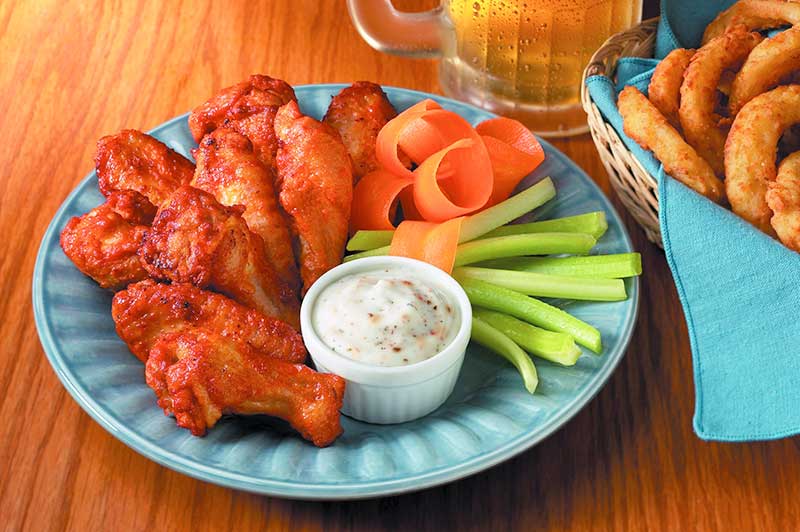The old saying warns us not to count chickens, but for the fast-moving consumer goods (FMCG) industry, measuring chicken sales is essential to the bottom line. From the meat department to deli to dairy and more, chicken is an important product driving a total of $26.2 billion in annual sales in the U.S. But chicken’s value across the store stretches well beyond the profits it presents as a stand-alone product, says global information and measurement company Nielsen. As an ingredient in other items, chicken drives an additional $9.3 billion in total store sales. And sales of chicken eggs plus products containing egg represent a $32 billion industry.
Not surprisingly, fresh chicken continues to be a primary driver of revenue, with $10.6 billion in sales at retail. When it comes to the cuts Americans favor overall, today’s health-conscious shoppers are flocking to leaner cuts like breasts and thighs, while sales of legs and drumsticks and whole chickens have declined year-over-year. That said, different cuts resonate with different demographic groups across the U.S. Understanding the different preferences and drivers of different consumer segments’ purchasing can help drive sales growth, according to Nielsen.
But while fresh chicken represents an impressive 30 percent of total chicken sales, that still leaves 70 percent of chicken product sales coming from across the store. So where are chicken producers, manufacturers and retailers finding big growth with this little bird?
Deli drums up chicken sales
Of all the departments across the store, deli has seen the strongest growth for chicken products. For the 12 months ended June 2, 2018, deli represented a rise of $305 million in dollar sales and 51 million unit sales for chicken products, the highest increases of any department. Within the deli department, growth for chicken products have come from several areas, as many of these items tap into key consumer trends.
Today’s shoppers are increasingly looking for convenience in their busy lives, and the deli offers pre-prepared foods to make shoppers’ lives a little bit easier. Fully cooked deli items make up the largest share of growth for chicken products in the deli aisle, with $138 million in annual sales growth, and smoked chicken, tenders/nuggets, rotisserie chicken and thighs are the top items driving growth for the category.
Chicken products in other deli categories such as prepared foods and lunch meats are also benefiting from shoppers’ search for convenience. Salads, soup, complete meals and chicken main course sales are on the rise for prepared food chicken products, while sales of service/bulk deli chicken flavors like honey rotisserie, garlic and tuscan are increasing.
While meal combos make up just $12 million in sales growth for chicken product in the deli aisle, that number is rising in large part due to the global shift toward snacking. And when it comes to chicken, sales of snacking combos like lunchables and more adult-focused lunchables with premium meats and cheeses are growing.
The power of protein
Whether shoppers are trying to balance their diet or find the energy they need throughout the day, today’s consumers are undeniably interested in good sources of protein. In fact, many in the U.S. reach for a source of protein with every meal, and meat continues to be the reigning king. According to a Nielsen survey from last year, a whopping 78 percent and 61 percent of consumers consider meat and eggs a first-choice protein for their meals, respectively, while just 19 percent consider legumes, nuts and seeds a top source.
While the alternative meat industry—including legumes, nuts and seeds—currently represents more than $800 million in annual sales, it is less than one-10th the size of fresh chicken’s sales. Still, the competition against meat and chicken can’t be ignored. The same survey found that consumers intend to eat more fish and legumes but also plan to eat less meat. And plant-based meat options are skyrocketing as consumers hunt for varied protein options, with a 30 percent increase in sales in the last year.
While it is clear today’s shoppers are seeking out protein, many have surprisingly poor knowledge of foods’ protein content. In 2015, just 38 percent of consumers consider chicken a high-protein food, while nearly 32 percent thought peanut butter was high-protein. There has only been marginal improvement since then, as just last month only 42 percent of consumers consider chicken a high-protein food. In order to grab the attention of today’s protein-hungry eaters, chicken producers would benefit from highlighting its high protein content for confused consumers.
The early bird catches the worm
To keep its place at the head of the table, chicken needs to keep innovating. A prime example of this can be found in chicken’s success in becoming a driver in meal kit sales. In-store meal kits featuring chicken have grown in sales by 19 percent. And there’s even more opportunity for this little bird as the popularity of meal kits continues to rise. In the last year, in-store meal kits have seen a 26 percent increase in sales, growing to $154.7 million in retail sales.
It’s important for chicken producers and retailers to tune in closely to food trends and the motivations of today’s eaters to ensure consumers will continue to count on chicken.
Keep reading:
New Nielsen Research Highlights Opportunities For Meal Kit Sales
https://www.theshelbyreport.com/2018/05/02/starkist-launches-chicken-creations-pouches/
Americans Ate An Estimated 1.35B Chicken Wings For The Super Bowl

